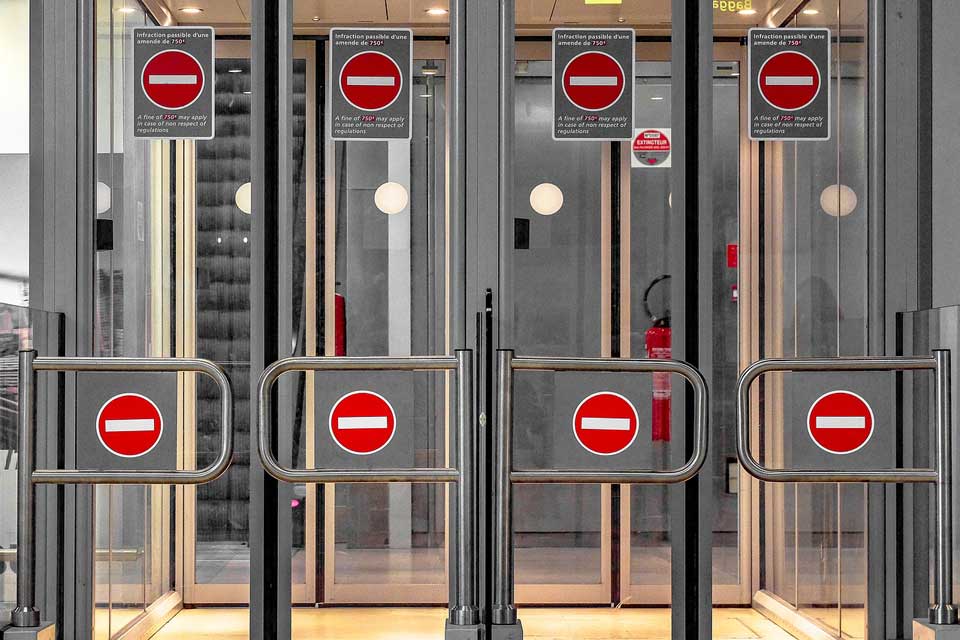The total value of world production of Physical Security products at factory gate prices in 2019 was $34.3Bn, an increase of 8.5% on 2018 and equivalent to a compound annual growth rate (CAGR) over the last 5 years of 7.24%.
According to a report from ResearchandMarkets, over the last 10 years, the market has grown by a CAGR of 6.27%. However, different rates of growth apply in each of the three key segments (Access Control, Video Surveillance, Intruder Alarm / Perimeter Protection) and geographic territories. It forecasts the total market will reach $56.76Bn in 2024.
Key report findings include:-
- China has increased its market share this year but still has a market penetration of 50% less than North America, based on sales per capita. The Chinese market has grown rapidly through a boom in new construction and Safe City projects in the public sector. However very little of this vast expanding market has been of benefit to overseas manufacturers. The report shows that the problem for overseas manufacturers getting a piece of the China market is not about technology or performance, at its core it is a geopolitical challenge.
- In 2019, AI Technology applied to Video Surveillance has convinced the market that by 2020 it will become mainstream. Significant improvements in AI Video Analytics software is making this possible and over the next 10 years it will become a standard requirement across Video Surveillance solutions. There is a critical need to make full use of the massive amounts of data being generated by video surveillance cameras and AI-based solutions are the only practical answer. Modern chip architecture with AI software can comb through vast volumes of data and boost security and safety. Th reports says there is a lot of development in this field that we are yet to see, but the path towards AI seems quite clear.
- The supply structure and the competitive landscape will continue to change over the next few years and the main driver for this is the Internet of Things (IoT). Physical Security systems generate vast amounts of information that when analyzed together with data from other Building Automation Systems can deliver intelligence that will improve the security, safety and performance of buildings and the business enterprise within.
Demand structure in the video surveillance business is unbalanced because of the Chinese market. The main reason is that the government has some control over even private video surveillance manufacturing companies. If these companies want public sector business (which today accounts for more than 50% of the Chinese’s video surveillance market) and support with long term cheap loans, then they must comply with the states requirements.
For this the Chinese government ensures that foreign equipment will not be used on public sector projects. Not surprisingly this arrangement has distorted any possibility of open trade and further has allowed the two major Chinese manufactures to build up a market share of 40% of the worlds video camera business; in part by operating a race to the bottom by lowering prices that no other manufacturers could sustain because they don’t have the same volume of production.
However on the horizon are other Chinese companies that want a part of the massive investment in the public sector Safe City projects. Huawei, one of the world’s largest communication companies, has announced a major push into video cameras and an AI video analytics startup Megvii intends to offer complete video surveillance solutions. They will eventually get established in the public sector market and take share from the present incumbents, and this could at least reduce the pressure on non-Chinese manufacturers operating in the more open world market.
In terms of macro trends:-
- Access control is expected to deliver a slightly higher growth than the 8.2% report has estimated, as it further expanded the IP network business, advancing deeper into biometric, identity management, wireless locking systems and ACaaS. This would have been the 3rd consecutive year that it turned in the highest rate of growth of the 3 businesses, but price pressures are starting to bite, partially through consolidation and weaknesses in the supply chain. This has reduced growth when measured by value.
- M&A data collected over the last 18 years shows that the Physical Security industry, has gone through 4 cycles of increase and decline in the value of activity, sometimes exaggerated by a number of billion dollar deals in one year. In 2019 the value of mergers and acquisitions fell to $2.913Bn a reduction of approximately 12% on the 2018 adjusted value.
- Since January 2018, about 75 new entrants have gained VC Investment of approx. $900 million for Physical Security solutions in commercial and industrial buildings. This excludes 2 of the major investments made in Megvii and OpenAI claiming $1.75 billion.






